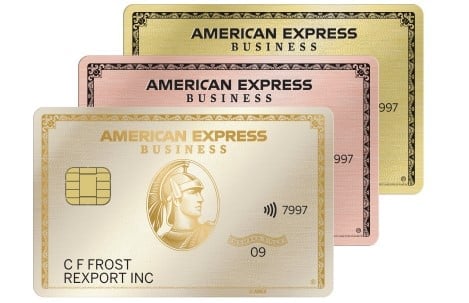SBA Line of Credit: What It Is and How to Get One
The SBA offers multiple lines of credit for business owners who need short-term working capital.
Many, or all, of the products featured on this page are from our advertising partners who compensate us when you take certain actions on our website or click to take an action on their website. However, this does not influence our evaluations. Our opinions are our own. Here is a list of our partners and here's how we make money.
Concerned about tariffs?
Many small-business owners are under increased economic stress and uncertainty following the latest tariff announcements. NerdWallet is here to help you find answers for whatever you're looking for. Here are some resources to help you get started:
Need emergency funding? Consider a business line of credit.
Looking for fast access to working capital? Discover the best working capital loans.
Want tips on how to mitigate the impact of tariffs? Read our guide.
SBA lines of credit are a good small-business loan option if you need short-term working capital to weather seasonal ups and downs or to overcome temporary cash flow shortages.
Like traditional SBA loans, SBA lines of credit are issued by participating lenders (like banks and credit unions) and partially guaranteed by the U.S. Small Business Administration. These lines of credit are available in amounts up to $5 million with repayment terms as long as 10 years.
💬 Business Lines of Credit: Only pay interest on what you use
Business lines of credit are a great option for business owners who are looking for flexible funding. Lines of credit can cover unexpected expenses and allow recipients to only pay interest on what they borrow.
By connecting businesses with trusted lenders in our network, our in-house sales experts have helped secure $947 million in lines of credit for borrowers. Get started today and let us do the heavy lifting for you.
with Fundera by Nerdwallet

— Mike Ross, NerdWallet Business Loans Team Lead
What is an SBA line of credit?
An SBA line of credit is a flexible form of short-term financing that provides a reservoir of money that you can draw from as needed. You only pay interest on the amount you borrow — unlike standard SBA loans — which provide a lump sum that you pay back in its entirety over a specific period of time.
SBA lines of credit are available through different parts of the 7(a) loan program. You cannot get a line of credit through the 504 or microloan programs.
Types of SBA lines of credit
Under the umbrella of the 7(a) loan program, the SBA offers the following lines of credit:
SBA CAPLines
SBA CAPLines of credit are designed to meet specific short-term and cyclical working capital needs. CAPLines may be fixed or revolving, depending on the type of credit line and how you plan to use it.
These SBA lines of credit are available in amounts up to $5 million and the SBA guarantees a maximum of 85% for loans up to $150,000 and 75% for loans greater than $150,000.
There are four options for SBA CAPLines:
Seasonal CAPLines. This SBA line of credit can provide cash flow to small-business owners who experience seasonal peaks and valleys in revenue. Funds can be used to cover increased labor costs and other expenses brought on by your business’s busy season.
Contract CAPLines. This credit line is available to eligible small businesses that need funding to execute their working contracts. Funds can cover supplies, labor, materials and more.
Builders CAPLines. Builders and small general contractors can use this line of credit to construct or rehabilitate residential or commercial properties. Funds may only be used for work done on-site to the structure, utility connections and landscaping.
Working CAPLines. This SBA line of credit can provide working capital to finance a variety of short-term expenses. Because credit availability for this option is based on your existing assets, lenders have to continuously monitor your collateral — and may charge additional fees as a result.
SBA Express lines of credit
In addition to term loans, SBA Express loans are available as lines of credit. These products have smaller maximum amounts than other 7(a) loans; they are available up to $500,000. They also have a lower SBA guarantee — the SBA only guarantees a maximum of 50%.
SBA Express lenders, however, have the authority to approve, process and close applications without the SBA’s review. This means that an Express line of credit will likely fund faster than alternative options.
SBA Export lines of credit
The SBA Export Express and Export Working Capital programs both offer lines of credit. These programs are designed for businesses that need funding to expand or support their export operations.
SBA Export Express lines of credit are available in amounts up to $500,000, with a maximum guarantee of 90% for loans of $350,000 or less and 75% for loans more than $350,000. Export Working Capital lines of credit, on the other hand, offer up to $5 million with a maximum guarantee of 90%.
SBA Working Capital Pilot (WCP) lines of credit
The SBA Working Capital Pilot program is designed to provide working capital to a wider variety of small businesses. The WCP program offers transaction- and asset-based credit lines.
These credit lines are available in amounts up to $5 million, with a maximum guarantee of 85% for loans up to $150,000 and 75% for loans greater than $150,000.
Unlike other SBA lines of credit, the WCP credit line offers a unique guarantee fee structure. You pay an annual short-term guarantee fee; the lender charges a proportional amount of this fee for each year your credit line is in use. As a result, you’re paying a short-term fee for a one-year term, rather than for a long-term maturity (which is how you would pay for other types of 7(a) loans).
SBA line of credit rates
Because all of the SBA line of credit options are housed under the 7(a) loan program, the interest rates are the same as SBA 7(a) loans — with the exception of SBA Export Working Capital lines of credit.
This means that your SBA loan rates are set based on the prime rate, plus a spread that’s negotiated between you and your lender. Rates can be fixed or variable — but are subject to SBA maximums — which are determined by the size of your credit line.
Currently, variable rates range from 10.5% to 14%. You can find the updated maximum allowed fixed rates on the SBA website.
The SBA does not set interest rate guidelines for Export Working Capital lines of credit. Rates on these products will vary based on your lender — but the SBA does monitor them for “reasonableness.”
SBA line of credit terms
Repayment terms on SBA lines of credit vary depending on the type of credit line:
SBA line of credit | Maximum repayment term |
Working Capital, Contract and Seasonal CAPLines | 10 years. |
Builders CAPLines | Five years. |
Express lines of credit | 10 years. |
Export Express lines of credit | Seven years. |
Export Working Capital lines of credit | Three years. |
Working Capital Pilot program lines of credit | Five years. |
Although these are the maximum maturities, it’s important to understand that each SBA line of credit has specific requirements on how they can be used within that time.
SBA Express lines of credit, for example, must be structured with a term-out period when the maturity is longer than one year. A term-out is a period in which you repay the loan but can’t take money out. Express credit lines of more than one year must have a term-out period that is not less than the draw period — i.e. the period during which you can take out funds.
Before you get an SBA line of credit, you should talk to your lender to get a better sense of what they offer and how your specific credit line would function.
SBA line of credit requirements
To qualify for an SBA line of credit, you’ll need to meet standard SBA loan requirements, as well as any criteria specific to your loan program. You’ll also need to meet the qualifications set by your lender.
Most SBA lenders will require you to have good credit (usually a score of 690 or higher) and strong finances to qualify for one of these credit lines. Although many of these programs only require 12 months in operation, lenders will typically want to see at least two years. Almost 85% of CAPLines issued so far in fiscal year 2025, for example, have gone to companies with more than two years in business.
It’s likely you also need to provide collateral to secure your credit line. Lenders are not required to take collateral for SBA loans of $50,000 or less, but must follow their standard policies for larger funding amounts.
How to apply for an SBA line of credit
To get an SBA line of credit, you’ll need to find an SBA lender that offers the product you’re looking for. You can start your search with banks or credit unions you already have a relationship with. Since these institutions are already familiar with your business, it may be easier to get approved.
You can also use the SBA’s Lender Match tool. With Lender Match, you provide information about your business and its financing needs and in two days, get matched with lenders who might be able to work with you.
Once you’ve decided on a lender, you’ll work with them to complete and submit your SBA loan application. You’ll need to provide SBA-specific forms, financial statements, as well as supporting business documents.
It can take anywhere from 30 to 90 days to get approved for an SBA line of credit. Both SBA Preferred and Express lenders can offer faster funding timelines, as they can process and close applications without SBA approval.

Alternatives to an SBA line of credit
If you don’t think you can qualify for an SBA line of credit — or need faster funding — consider these alternatives:
For fast access to working capital: Working capital lines of credit from online lenders can help you meet your short-term financing needs. These products offer the flexibility of a line of credit, but are easier to qualify for than SBA options. You may be able to qualify even if you’re a new business or have bad credit. Some lenders can also offer funds in as little as 24 hours.
For affordable interest rates: If you can’t qualify for an SBA line of credit, but still want low interest rates, consider working with a microlender or nonprofit organization. These lenders can offer a variety of products and typically focus their lending efforts on traditionally-underserved business owners. Microlenders offer competitive rates and terms, but will be slower to fund than online lenders.
For day-to-day purchases: Although similar to business lines of credit, business credit cards can be better-suited for financing everyday purchases, especially smaller ones. They also allow you to earn rewards on your spending. Business credit cards can be particularly useful for newer businesses — as issuers typically rely on your personal credit (as opposed to time in business or business finances) to evaluate your application.










